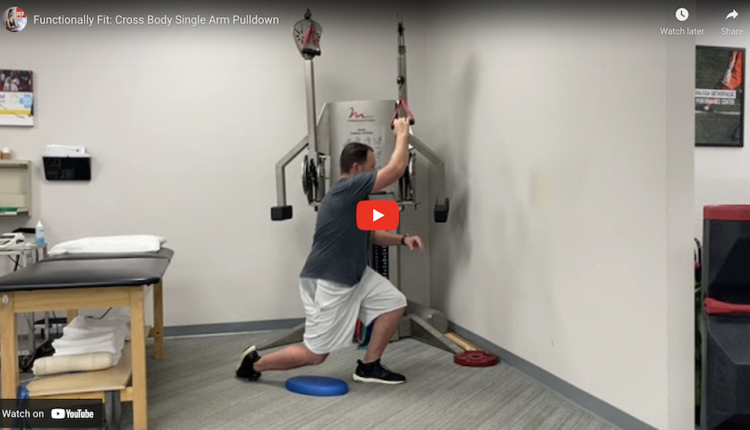Maintaining or achieving proper squat form can be challenging for those new to squatting or clients experiencing pain. Specifically, dysfunction in the back, hip or knee can cause compensatory motion or limit one’s ability to squat fully. The goblet squat to a box can be a great tool for training and retraining the squat pattern.


Execution:
Select an appropriate dumbbell and box height. Position the feet at least shoulder width apart with the heels lightly touching the front of the box. Cup the bottom of the dumbbell in each hand with the elbows abasing the body. Next, squat down to the box. Pause at the bottom, while keeping the head and chest up, and then return to the starting position. Repeat for 2-3 sets of 8-12 repetitions.
Note: the box height should be adjusted based on form and available range of motion.
Progressions:
1. Lower the box height
2. Increase the weight
3. Increase the cadence on descent
Application:
This exercise will increase lower body strength and facilitate proper squat form. In addition, using the box reduces apprehension or fear of falling back/losing balance. The tactile feedback and safety the box offers is particularly useful for clientele new to squats and those recovering from an injury or surgery. By changing the box height, it is possible to regress and progress the depth in smaller increments while encouraging proper form. This exercise variation can prove useful for those dealing with low back pain (avoids spinal loading), patellofemoral pain, hip pain related to femoroacetabular impingement and other lower body conditions.




















